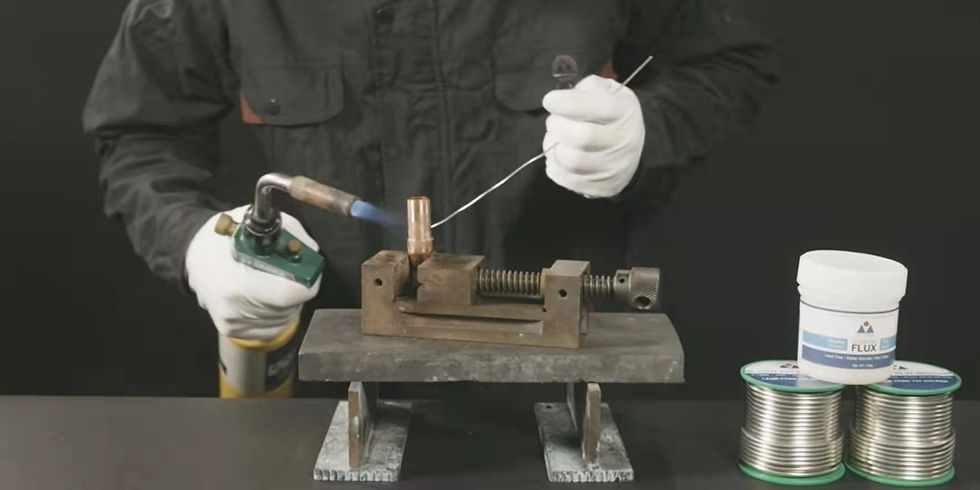Advantages of Brazing Paste
- Tony, the Welder

- Jul 15, 2020
- 2 min read
Updated: Jul 16, 2020
Brazing paste is a new kind of composite brazing material. It is a paste mixed with brazing powder, flux and binder to form a paste capable of being screen printed onto a substrate or applied to the workpiece via a dispenser. Compared to conventional brazing materials, brazing paste is more suited for automatic application in large quantities. Moreover, their application dosage can be reproduced with high precision. When brazing paste is used with induction brazing, flame brazing, reflow soldering and other methods, extremely high production efficiency can be achieved. At the same time, gas release of brazing flux is relatively low, and braze quality is excellent.
In brazing paste mixtures, the key component is brazing alloy powder. It represents 80%-90% of the total weight and acts as a filler metal to form the braze joint. The brazing flux component of the mixture is used to clean any oxide on the surfaces of the weldments and alloy powder. Brazing flux also enhances the wetting property and spread of the brazing alloy. Adhesive in the brazing paste mixture ensures that alloy powder and brazing flux is mixed properly to form a mixture of desired viscosity, and such a mixture is easy to dispense at the designated braze area during the dispensing process.

Classification of brazing paste is the same as that of brazing alloys. In general, they are divided into categories of soldering paste and brazing paste. Suppliers offer a wide range of ready-made brazing pastes correctly formulated to suit different parent materials, processes, and methods of application. The application of soldering paste in advanced electrical and electronic packaging industries is already highly developed. Soldering paste is widely applied in the production of printed circuit board. Specifically, its role in the joining of semi-conductors, metals, polymers, and ceramic devices is irreplaceable. SAC (Sn-Ag-Cu) is a typical product series in the soldering paste category, and it is mixed by Sn-3.9Ag-0.6Cu powder, brazing flux and adhesive according to a certain ratio. It is printed directly onto a substrate using printing template, and place components are then assembled for reflow soldering. Such processes have excellent brazing quality, production efficiency and stability. Al-Si paste is a common product in the brazing paste category. It is used for the brazing of aluminium and aluminium alloys, and even aluminium to copper and stainless steel. Another popular product, Ag-Cu-Ti is used for furnace brazing of metals and ceramic. The user should take considerable care to store these specific pastes in cool and dry environments as recommended by suppliers to prevent brazing characteristic degrading. Often, but not always, discoloration of the paste may provide a tell-tale sign that the brazing paste has expired.
In conclusion, in the industries there is a trend for the application of lighter and smaller braze parts, and braze joint is becoming more diverse and complex. Production processes utilizing brazing technology are happening at larger scales, while requirement for efficiency and quality has been raised. Due to its adaptability to high precision, mass automatic dispensing and automatic brazing processes, brazing paste will certainly have very broad application prospects.




Comments